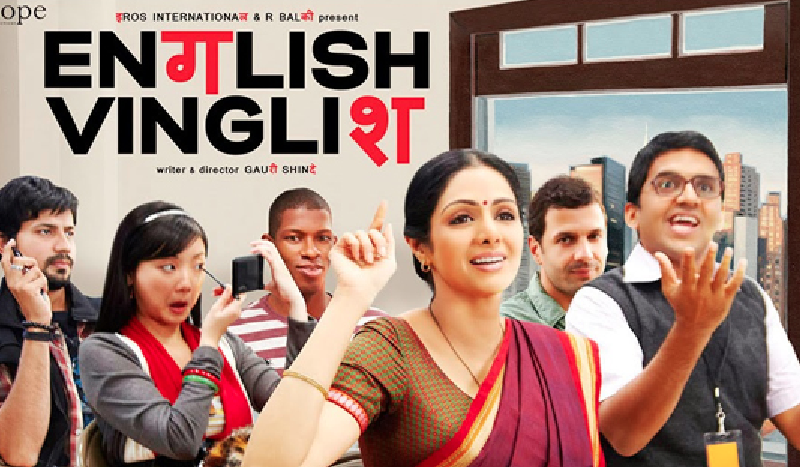Me, Shaashi, and English Vinglish (2012)
It wasn’t until I returned from India that I started watching Indian films with any real drive. While in India, I watched them almost exclusively on overnight buses, and even then, I couldn’t understand the languages emanating from the cabins’ speakers. But now that I am back in the United States, it is much through the watching of Indian films that I reminisce about my time there.
When I see movies with palaces, for example, I think of traversing the fortresses of Rajasthan, or when I see trains, I think of my overnight journey from Hyderabad to Mumbai. In this way, when I watched English Vinglish the other day, a 2012 Hindi film about a woman’s brief but meaningful move to New York, I thought about my move to Hyderabad.
English Vinglish centers on Shaashi, a dedicated mother and a brilliant cook, played by Sridevi. Unfortunately, it is for her cooking skills that her family affords her most credit. With her limited command of English, her fluent-speaking family mocks her and excludes her from much of their conversations.
Within this context, she is invited to the United States to help her sister prepare for her niece’s wedding. Soon after she arrives, and somewhat serendipitously, she learns of, and signs up for, a four-week English language course. Shaashi’s effort to learn English form the film’s main narrative and play an integral part in helping her build the respect that she deserves – both from herself and from her family.
All-in-all, English Vinglish is an entertaining movie. The characters are unique, and the story is engaging. But I think the movie is also a notable allegory for many of the common themes that people face when moving to a new place: frustrations with language differences, confusion with food, disorientation with commuting, and eventually, increased self-confidence from the struggle and success. I definitely saw some of my experience in English Vinglish.
In the weeks leading up to my departure to India, my family, as always, was incredibly supportive. They shared in my excitement for the new and in my anticipations of the unknown. In this way, my experience was much different from that of Shaashi. But in the journey to come, I experienced many of themes explored through her journey.
There’s a scene in English Vinglish, for example, during which Shaashi struggles with the unfamiliar menu of a city café. The cashier is rude and the food foreign. She runs away in despair. I can relate.
While I didn’t face rude cashiers, my culinary introduction to India was more than just stressful; it was trial by fire. Having eaten little Indian food before moving to India, I had anticipated a slow ease into the cuisine, a program of experimentation tempered with more familiar foods. I was so wrong, and shortly after arriving in Hyderabad, I wrote home: “Any idea of slowly starting to eat Indian food as I get used to it has quickly dissipated as it is all I can find.” Shaashi eventually finds the familiar in home cooking at her sister’s house. I eventually found it in a hamburger at the Hard Rock Café – about an hour commute away.
Similarly, Shaashi struggles with commuting across a new city. In her case, the obstacles include finding the train station, navigating the underground maze that is the New York subway system, and gaining a sense of direction in the seconds after reemerging from the subterranean world.
Learning the world of Indian traffic, of the autos (three-wheeled vehicles) and the buses, of the pedestrians and the scooters, was one of the great joys of moving to India for me. But it was also difficult. There was always something new, but confusing, such as people turning into oncoming traffic for short cuts, people crossing the street by simply stepping into it and letting cars swerve by them, or people texting while sitting ‘side-saddle’ on the back of motorcycles.
As does Shaashi, I depended on the help of others to get from one place to another. With limited to no street signs in parts of Hyderabad, my getting around the city generally involved stopping the auto from time to time to ask people on the side of the street for increasingly specific directions.
Eventually, though, I always made it to my destination, achieved the difficult. And English Vnglish plays homage to this important aspect of travel, as well. The grit. The success. The personal growth.
English Vinglish was a joy to watch, in part, because it showed that whether moving from India to the United States, or in the reverse, many of the experiences and difficulties are the same, and that the satisfactions of success are universal. Happy traveling!


